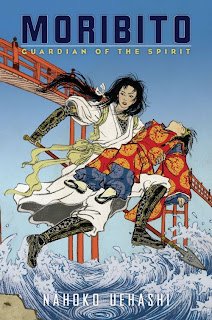The past few months of political drama have turned me into a news junkie -- I listen to Morning Edition while putting my makeup on, I check Andrew Sullivan on my lunch breaks, I read the Sunday Times online. But with this constant connectedness comes occasional exhaustion; and in thinking about how tired I am of news sometimes, and bad news especially, the first line of this sonnet by William Wordsworth rose into my brain and inspired me to look it up:The world is too much with us; late and soon,
Getting and spending, we lay waste our powers;
Little we see in Nature that is ours;
We have given our hearts away, a sordid boon!
This Sea that bares her bosom to the moon,
The winds that will be howling at all hours,
And are up-gathered now like sleeping flowers,
For this, for everything, we are out of tune;
It moves us not.--Great God! I'd rather be
A Pagan suckled in a creed outworn
;So might I, standing on this pleasant lea,
Have glimpses that would make me less forlorn;
Have sight of Proteus rising from the sea;
Or hear old Triton blow his wreathed horn.
I have to say, when I took the most excellent Romantic Poets class at college, with Connie Walker, Wordsworth was my least favorite of the Big Six (Blake, Wordsworth, Coleridge, Keats, Shelley, Byron). To me he seemed to have the least sense of humor and most sentimentality, and to live the most boring life, without even the Romanticism to die young, as all poets worthy of that name should. (The link is hilarious, btw.) But rereading that sonnet reminded me of my favorite poem by him, "Lines Written a Few Miles above Tintern Abbey," and I looked it up as well:
Five years have past; five summers, with the length
Of five long winters! and again I hear
These waters, rolling from their mountain-springs
With a sweet inland murmur.—Once again
Do I behold these steep and lofty cliffs,
Which on a wild secluded scene impress
Thoughts of more deep seclusion; and connect
The landscape with the quiet of the sky.
The day is come when I again repose
Here, under this dark sycamore, and view
These plots of cottage-ground, these orchard-tufts,
Which, at this season, with their unripe fruits,
Among the woods and copses lose themselves,
Nor, with their green and simple hue, disturb
The wild green landscape. Once again I see
These hedge-rows, hardly hedge-rows, little lines
Of sportive wood run wild; these pastoral farms,
Green to the very door; and wreathes of smoke
Sent up, in silence, from among the trees,
With some uncertain notice, as might seem,
Of vagrant dwellers in the houseless woods,
Or of some hermit's cave, where by his fire
The hermit sits alone.
Though absent long,
These forms of beauty have not been to me,
As is a landscape to a blind man's eye:
But oft, in lonely rooms, and mid the din
Of towns and cities, I have owed to them,
In hours of weariness, sensations sweet,
Felt in the blood, and felt along the heart,
And passing even into my purer mind
With tranquil restoration:—feelings too
Of unremembered pleasure; such, perhaps,
As may have had no trivial influence
On that best portion of a good man's life;
His little, nameless, unremembered acts
Of kindness and of love. Nor less, I trust,
To them I may have owed another gift,
Of aspect more sublime; that blessed mood,
In which the burthen of the mystery,
In which the heavy and the weary weight
Of all this unintelligible world
Is lighten'd:—that serene and blessed mood,
In which the affections gently lead us on,
Until, the breath of this corporeal frame,
And even the motion of our human blood
Almost suspended, we are laid asleep
In body, and become a living soul:
While with an eye made quiet by the power
Of harmony, and the deep power of joy,
We see into the life of things.
(You can read the rest here.) It has been probably eight or nine years since I read that poem for class; I have very specific memories of sitting on a bench overlooking the lakes at Carleton and reading it there on a gray and windy day. And rereading it today on the Internet, I felt very much towards the poem as Wordsworth does toward the view of nature: that here in poetry is a Good that restores the soul, that encourages both "acts of kindness and of love" and "see[ing] into the life of things," and I have been too long away from it. Maybe cutting out one news source and reading instead one poem a day is what I need. . . .
I titled this post "What Words Are Worth" because I was trying to be clever while feeling cynical -- it's easy with the news to have too many words passing by, late and soon, and then to feel like they're not worth very much at all. But looking again at "Tintern Abbey" reminded me that of course words are worth a great deal; they just have to be the right ones, and to have enough silence around them to be appreciated. Silence:
And good night.




